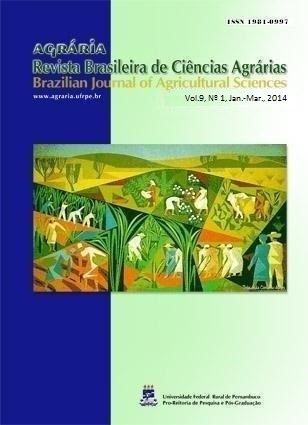Thermal scarification to overcome Piptadenia moniliformis seeds dormancy
DOI:
https://doi.org/10.5039/agraria.v9i1a2488Keywords:
forest species, germination, vigorAbstract
This study aimed to evaluate the performance of different thermal scarification methods to overcome Piptadenia moniliformis seeds dormancy. The thermal treatments used were: control (no treatment - T1); seed immersion in water at 80 and 100 °C for 10 (T2 and T6, respectively), 30 (T3 and T7, respectively) and 60 (T4 and T8, respectively) seconds; seed immersion in water at 80 °C until cooling to room temperature (28 °C) (T5), and seed immersion in water at 100 °C until cooling to room temperature (28 °C) (T9). The seeds were placed for germination in boxes with transparent lid, containing the blotting paper substrate, which was moistened with Nystatin solution. Later, they were placed in a Biochemical Oxygen Demand germinator, regulated at 30 °C under continuous light. The following parameters were evaluated: first germination counting; final germination; germination speed index; root and shoot length; and root and shoot dry mass. The thermal scarification using seed immersion in water at 80 °C for 10 and 30 seconds was efficient in overcoming dormancy in Piptadenia moniliformis seeds, presenting the highest germination and vigor percentage.
Downloads
Downloads
Published
How to Cite
Issue
Section
License

This work is licensed under a Creative Commons Attribution-NonCommercial 3.0 Unported License.


